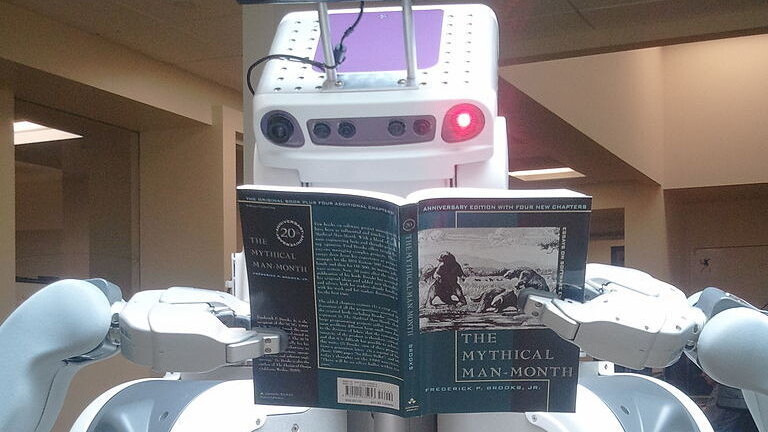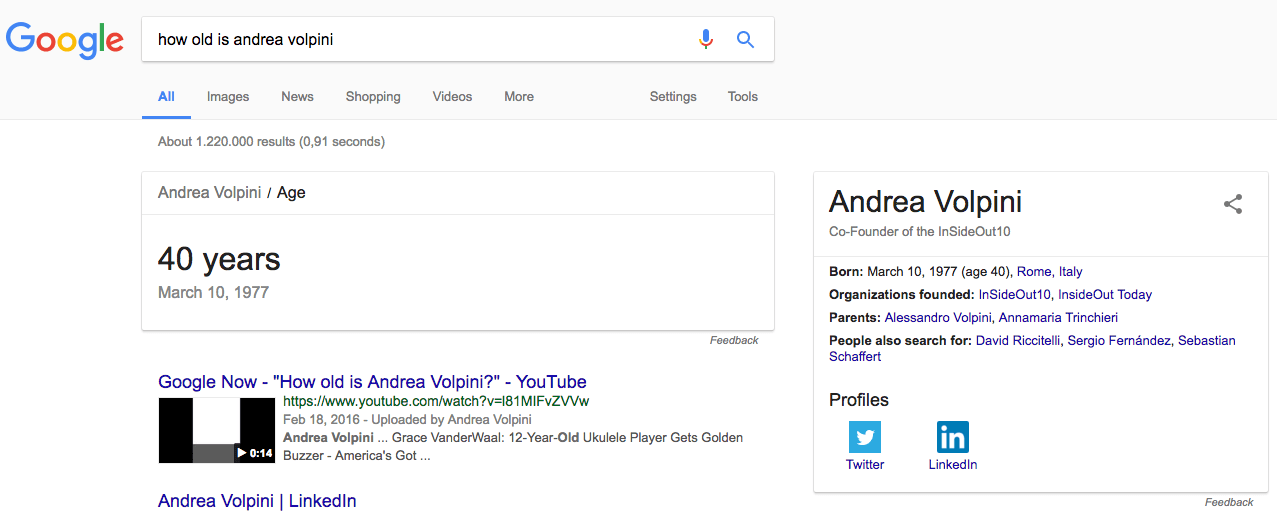
Every year sees the birth of tens of thousands of new startups. This means it’s getting harder and harder to get some attention as a fledgling company. There simply aren’t enough journalists to give startup the attention they might deserve.
TNW started out as a prime source for news about startups over ten years ago, and we’d like to honor those roots by creating more room to feature exciting and interesting new startups. In partnership with our business intelligence service Index, we’re launching Startup Stories, a new series we’re kicking off today.
The format consists of four simple questions: What does it do, where did the founders get the idea, what does the business model look like, and finally a ‘random box’ for fun anecdotes, extra info, profanity or whatever a startup would like to share with our audience.
The first company to be featured today is WordLift, a startup that makes online content easily understandable for chatbots, crawlers, and personal digital assistants like Siri or Cortana. Basically WordLift should be able to take this post, and parse it in a way that you can ask Siri ‘What is this new series Startup Stories on The Next Web?’ and Siri can give you an answer. But let Andrea Volpini, CEO of WordLift explain this in a far more eloquent way:
What does your startup do?
Wouldn’t it be great if you could talk with your favorite websites and blogs just like you do with your car or with Siri?
WordLift helps content writers work better, by letting them focus on writing great articles without worrying too much about how search engines work.
WordLift uses AI to grow organic traffic by translating articles into machine-friendly content that chatbots, search crawlers and personal digital assistants – like Google Assistant, Siri and Alexa – use to help consumers take actions.
The evolution of today’s search engines and the rapid adoption of personal assistants (PAs) – capable of understanding user intent and behaviors through available data – require an upgrade of the existing editorial workflow for bloggers, independent news providers and content marketers. With voice search coming on strong, websites now have to compete directly for business (and struggle to be on top of search results), by bringing targeted information at lower prices. With voice there are not many alternatives: Either you get featured on Google, or you get nothing.
In this context, data curation and metadata management become crucial tools to help bloggers and news publishers create the added value required to build a direct relationship with their readers.
WordLift targets smart content publishing focusing on automating SEO and bringing immediate economical value by increasing traffic and reducing the time spent on content curation and search marketing.
The processing is done in the cloud. WordLift analyzes articles and transforms text into metadata. Data is automatically published as five-stars linked open data and made available to machines. We also measure the performance of the content on Google in terms of search rankings and other factors that might influence organic traffic. This data is presented to the editors to help them improve their editorial plan and increase their reach.
Why did you come up with this idea?
Quite simply by looking at the structured knowledge available in today’s digital networks and how search engines were starting to take advantage of it. Try yourself asking Google who built the Colosseum and you will get an immediate answer that comes straight from Wikipedia. This information has been encoded in such a way that the Google Assistant can understand it.
We’ve built WordLift so that information is extracted from textual content and published in a user’s graph. This allows Google and others PAs to learn faster from blogs and websites.
Try it now, and ask Google Assistant “How old is Andrea Volpini?”

Large graphs like Freebase, DBpedia and Wikidata represent the majority of the information that computers use to interact with humans. There are also advanced linguistic resources, structured as linked data, that help computers understand human language (lexical databases like BabelNet or WordNet) and this is also an interesting area of development. But there is very little available in terms of tools that smaller bloggers can use to create their own structured knowledge.
We thought: Why don’t we create something that bloggers and editorial teams can use to build their own knowledge graphs? Why on Earth should a blogger deal with the bureaucracy and complexity of Wikipedia to share a fact he or she knows, or to add a new expression his or her tribe is using?
This is why WordLift was created. We went through several years in the making to create an easy-to-use annotation tool that could help anyone build his or her own knowledge graph and share a personal viewpoint with machines.
How do you make money?
WordLift is a Software-as-a-Service (SaaS). Bloggers and digital publishers pay a monthly fee starting at €19.99 per month. Assuming you write one post per week, a very cheap SEO consultant would do the same job for at least 10x our monthly subscription.
Our clients retain ownership of their data, so they can use WordLift’s APIs to create new services on top of their content, such as chat bots or personalized newsletters.
And last but not least, we’re partnering with WooRank to automate and combine first-in-class SEO techniques. Our goal? Let’s writers and bloggers forget about SEO rules, let AI do all the work and still… keep rocking on organic search!
The random box:
WordLift, much like today’s search engines, works with entities rather than tags and keywords. What is really an entity though?
Let’s make a simple experiment: close your eyes and imagine for a moment a…. “cat” ?; think of everything that you associate with it. In your mind’s eyes a “cat” is a mix of both generic and personalized features that make it unique. Everything you know about a “cat” is an entity in your own “knowledge graph.” You can map it to whatever language you like, but the concept remains the same and you can share it with others. Computers work the same way; a cat is an entity and can assume all kinds of forms while essentially remaining the same “thing” ?.
All the facts you care about are entities that search engines can index and learn from. Trilly and Diego, for example, are the first two cats that officially entered the web of data thanks to WordLift (and to their beloved “blogger mum” Elisabetta)! As Elisabetta started to build her own personal knowledge graph she created two “feline” entities – to share with the world her love and notion of her two pet friends.
Head over to Index if you have a startup and would like to be featured on TNW!
Get the TNW newsletter
Get the most important tech news in your inbox each week.




